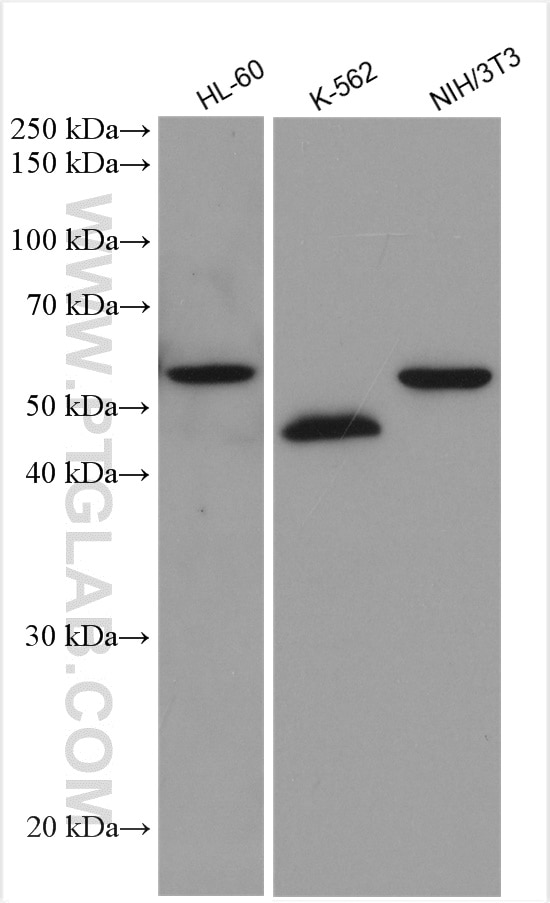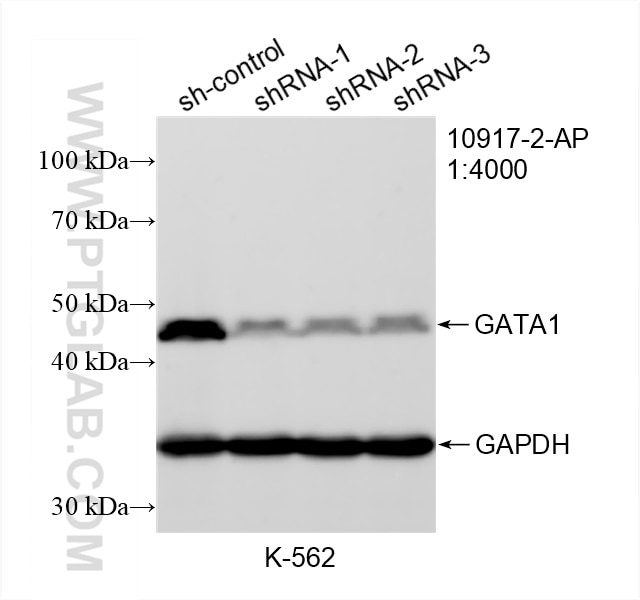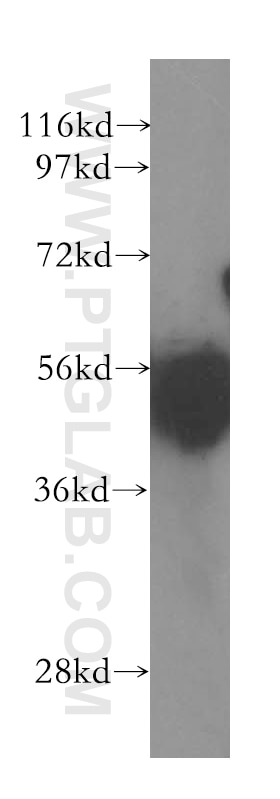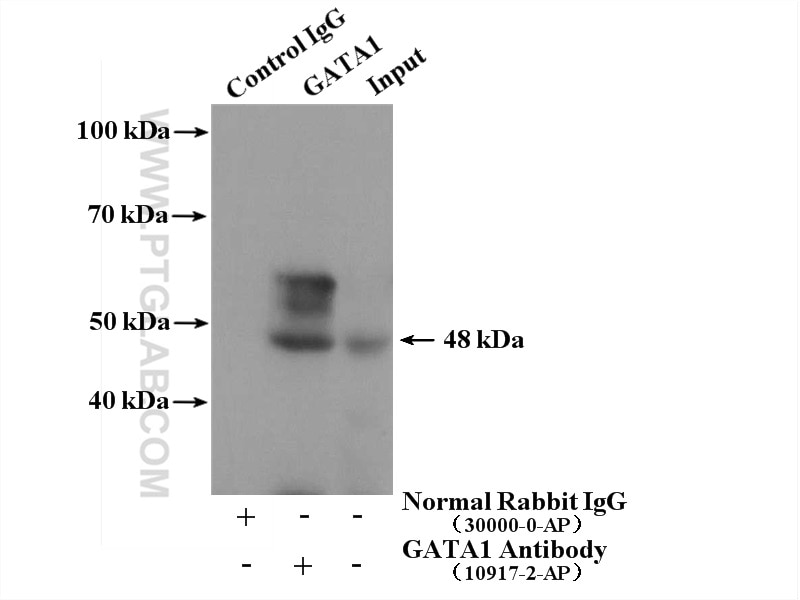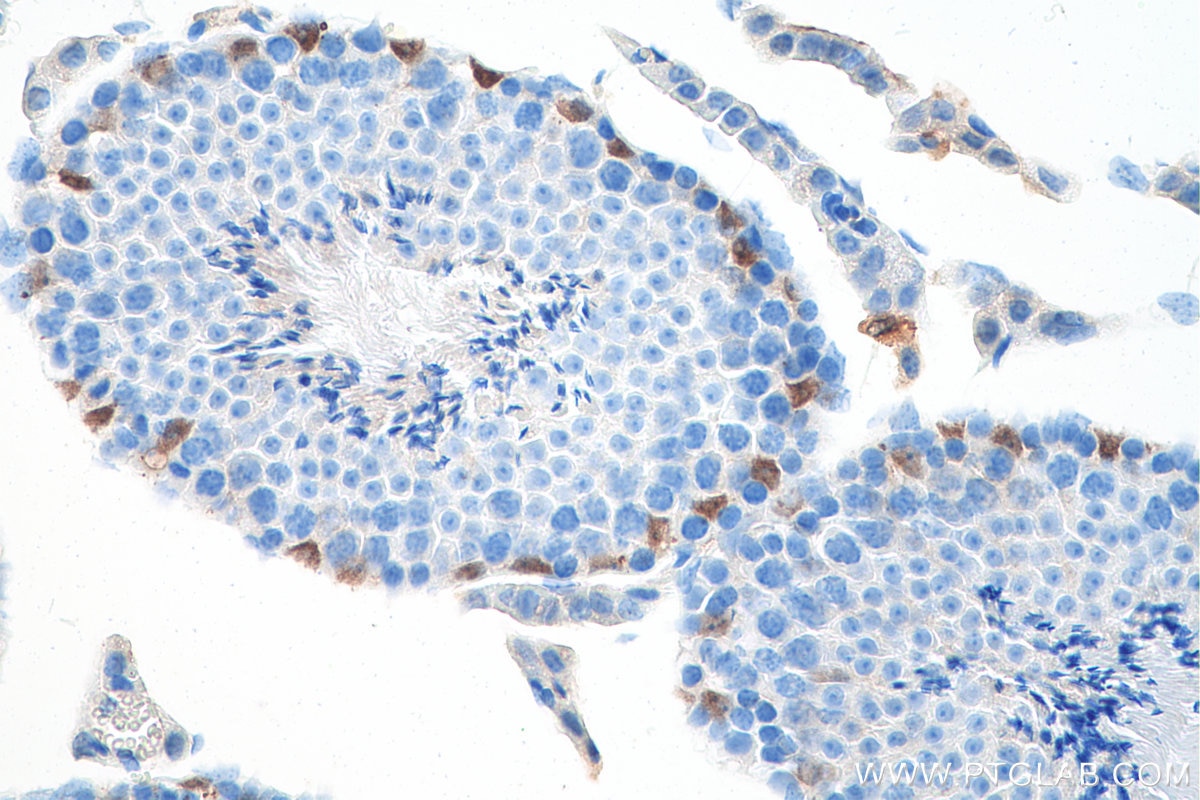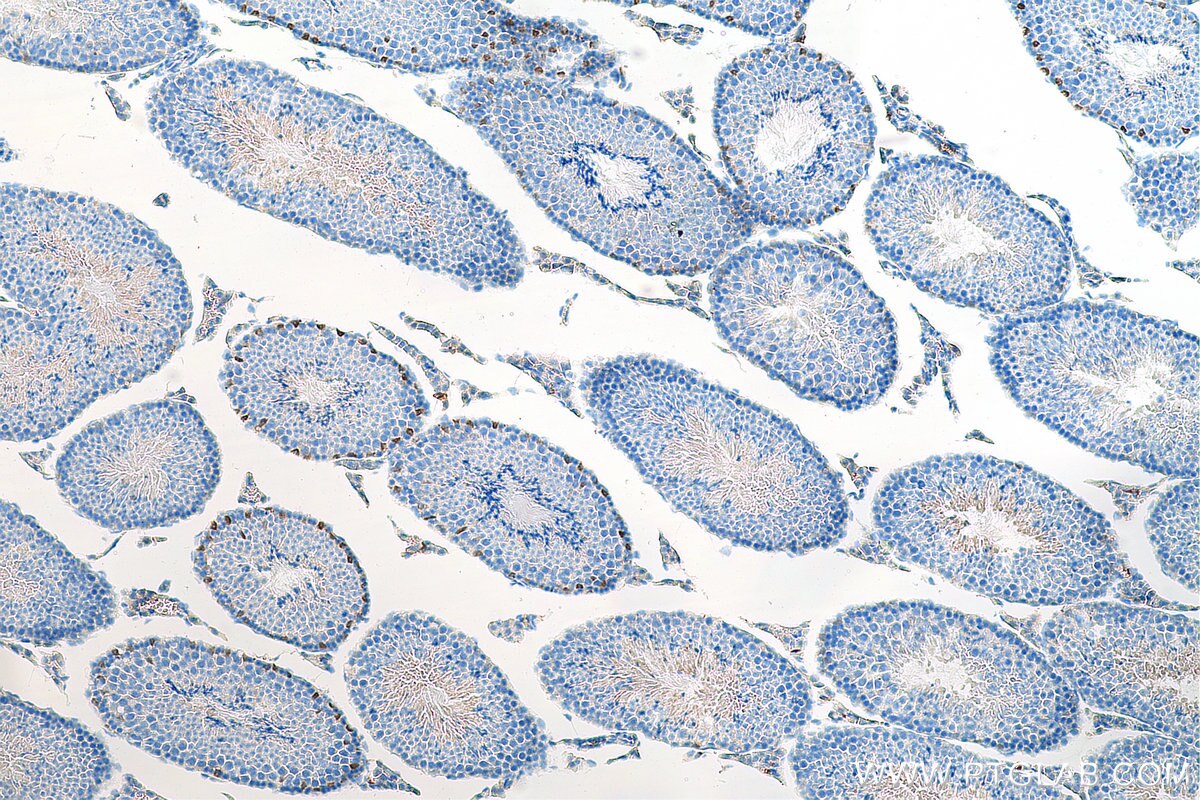- Phare
- Validé par KD/KO
Anticorps Polyclonal de lapin anti-GATA1
GATA1 Polyclonal Antibody for WB, IP, IHC, ELISA
Hôte / Isotype
Lapin / IgG
Réactivité testée
Humain, souris et plus (1)
Applications
WB, IHC, IF, IP, CoIP, ChIP, ELISA
Conjugaison
Non conjugué
N° de cat : 10917-2-AP
Synonymes
Galerie de données de validation
Applications testées
| Résultats positifs en WB | cellules HL-60, cellules K-562, cellules NIH/3T3, cellules Raji |
| Résultats positifs en IP | cellules K-562 |
| Résultats positifs en IHC | tissu testiculaire de souris, il est suggéré de démasquer l'antigène avec un tampon de TE buffer pH 9.0; (*) À défaut, 'le démasquage de l'antigène peut être 'effectué avec un tampon citrate pH 6,0. |
Dilution recommandée
| Application | Dilution |
|---|---|
| Western Blot (WB) | WB : 1:1000-1:6000 |
| Immunoprécipitation (IP) | IP : 0.5-4.0 ug for 1.0-3.0 mg of total protein lysate |
| Immunohistochimie (IHC) | IHC : 1:50-1:500 |
| It is recommended that this reagent should be titrated in each testing system to obtain optimal results. | |
| Sample-dependent, check data in validation data gallery | |
Applications publiées
| KD/KO | See 2 publications below |
| WB | See 12 publications below |
| IHC | See 5 publications below |
| IF | See 1 publications below |
| CoIP | See 1 publications below |
| ChIP | See 2 publications below |
Informations sur le produit
10917-2-AP cible GATA1 dans les applications de WB, IHC, IF, IP, CoIP, ChIP, ELISA et montre une réactivité avec des échantillons Humain, souris
| Réactivité | Humain, souris |
| Réactivité citée | Humain, poisson-zèbre, souris |
| Hôte / Isotype | Lapin / IgG |
| Clonalité | Polyclonal |
| Type | Anticorps |
| Immunogène | GATA1 Protéine recombinante Ag1350 |
| Nom complet | GATA binding protein 1 (globin transcription factor 1) |
| Masse moléculaire calculée | 43 kDa |
| Poids moléculaire observé | 50-55 kDa, 40-45 kDa |
| Numéro d’acquisition GenBank | BC009797 |
| Symbole du gène | GATA1 |
| Identification du gène (NCBI) | 2623 |
| Conjugaison | Non conjugué |
| Forme | Liquide |
| Méthode de purification | Purification par affinité contre l'antigène |
| Tampon de stockage | PBS with 0.02% sodium azide and 50% glycerol |
| Conditions de stockage | Stocker à -20°C. Stable pendant un an après l'expédition. L'aliquotage n'est pas nécessaire pour le stockage à -20oC Les 20ul contiennent 0,1% de BSA. |
Informations générales
GATA1 is first identified as a member of the GATA transcription factor family, whose members bind the consensus (WGATAR) binding motif [PMID:22937757]. GATA1, a zinc finger DNA-binding transcription factor, plays a critical role in the normal development of hematopoietic cell lineages. The protein contains an N-terminal region that confers transcriptional activity and a C-terminal domain that mediates binding to DNA and other factors [PMID: 8524811]. GATA-1 is also implicated in regulating the expression of the erythroid and megakaryocytic-specific genes [PMID:22937757]. GATA1 exists two isoform with the molecular weight 50-55 kDa and 40-45 kDa (PMID: 31189107 ).
Protocole
| Product Specific Protocols | |
|---|---|
| WB protocol for GATA1 antibody 10917-2-AP | Download protocol |
| IHC protocol for GATA1 antibody 10917-2-AP | Download protocol |
| IP protocol for GATA1 antibody 10917-2-AP | Download protocol |
| Standard Protocols | |
|---|---|
| Click here to view our Standard Protocols |
Publications
| Species | Application | Title |
|---|---|---|
Theranostics Differential effect of cancer-associated fibroblast-derived extracellular vesicles on cisplatin resistance in oral squamous cell carcinoma via miR-876-3p
| ||
Oncogene microRNA-23a, -27a and -24 synergistically regulate JAK1/Stat3 cascade and serve as novel therapeutic targets in human acute erythroid leukemia. | ||
iScience Superenhancer-driven circRNA Myst4 involves in pulmonary artery smooth muscle cell ferroptosis in pulmonary hypertension | ||
Front Immunol FLI1 Induces Megakaryopoiesis Gene Expression Through WAS/WIP-Dependent and Independent Mechanisms; Implications for Wiskott-Aldrich Syndrome. | ||
Genes (Basel) Proof of Gene Doping in a Mouse Model with a Human Erythropoietin Gene Transferred Using an Adenoviral Vector. | ||
Oncotarget The transcription factor GATA1 and the histone methyltransferase SET7 interact to promote VEGF-mediated angiogenesis and tumor growth and predict clinical outcome of breast cancer. |
